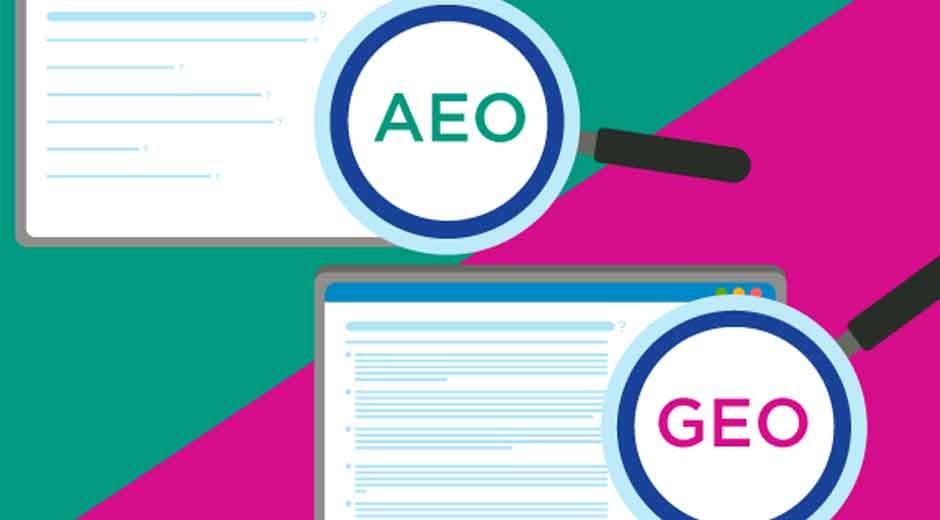The way people discover websites has undergone significant changes over the past few years. Search engines are no longer the only gateways to information.
With the rise of artificial intelligence, particularly generative AI and conversation assistants, businesses must rethink how they design and optimize their content.
The most important acronyms now are GEO (Generative Engine Optimization) and AEO (Answer Engine Optimization), but what do they essentially mean?
Together with Alpha Efficiency experts, this article examines how web design relates to GEO and AEO, providing practical steps to keep your site visible, relevant, and engaging. Following these steps prepares you for the future of AI-optimized web design.
GEO and AEO in Plain English
Before we delve into the design aspect, let’s take a moment to unpack these two terms, as they’re shaping the future of how people find information online. Understanding GEO and AEO is crucial for staying ahead in the digital landscape.
What is GEO (Generative Engine Optimization)?
If you’ve ever typed a question into ChatGPT, Gemini, or Perplexity, you know that these platforms don’t just show you a list of links. Instead, they generate a full answer, pulling bits and pieces from across the web.
That’s where Generative Engine Optimization (GEO) comes in. The goal is to ensure your website is one of the sources AI uses when building those answers.
Here’s what matters for GEO:
- Clarity over clutter: AI models seek well-structured, straightforward content that they can summarize without confusion.
- Depth of information: While short answers are important for AEO (we’ll get to that in a second), GEO rewards in-depth, authoritative content. Long-form guides, research pieces, and detailed tutorials are more likely to be cited.
- Credibility signals: AI engines favor websites that feel trustworthy. This includes elements such as author bios, clear branding, and even signals like backlinks or consistent publishing.
In short, GEO isn’t about ranking on page one; it’s about being part of the conversation AI is having with your audience.
What is AEO (Answer Engine Optimization)?
Now let’s flip to the other side: Answer Engine Optimization (AEO).
Unlike GEO, which favors detailed sources, AEO is all about bite-sized, direct answers. Think of when you ask Siri or Alexa something like, “What’s the best time to water indoor plants?” and you get a quick, simple sentence in return. That’s AEO at work.
Here’s what matters for AEO:
- Concise answers: Your site should offer clear responses in one or two sentences whenever possible.
- Question-driven content: Having dedicated FAQ sections, headings phrased as questions, and short explanatory boxes makes your content more AEO-friendly.
- Mobile and voice search alignment: AEO is heavily tied to how people use their phones and smart speakers, so readability and mobile design are critical.
Where GEO is about context and depth, AEO is about speed and clarity. The two complement each other perfectly: one helps you appear in long AI-generated explanations, the other helps you land in the spotlight for quick answers.
Why Web Design Is Suddenly a Big Part of SEO?
A few years ago, you could get away with thinking of web design and SEO as two separate jobs. Not anymore. The way your site is currently designed has a significant impact on whether AI tools can read, understand, and share it.
Here are the three key reasons:
1 Content Structured Visibility
AI systems thrive on structured layouts. Clear headings, schema markup, and logical navigation help generative engines extract meaningful snippets of information.
2 User Experience as a Ranking Factor
Engagement metrics (time on page, interaction rates, bounce rates) are more critical than ever. A well-designed site increases dwell time, signaling relevance to both search engines and AI engines.
3 Accesibility and Mobile-first Design
Since many AI-driven searches happen on mobile devices or via voice, a responsive and accessible design is essential for inclusion.
Design Principles for AI-Optimized Websites
1. Embrace Structured Layouts
Use consistent heading hierarchies (H1, H2, H3) and apply schema markup for products, FAQs, and services. This not only improves traditional SEO but also ensures that AI tools can parse your content effectively.
2. Prioritize Speed and Performance
Generative engines often skip slow sites. Optimize images, minimize scripts, and use modern frameworks like Next.js or Astro for lightning-fast loading.
3. Create Conversational Content Blocks
Instead of long paragraphs, design your pages with modular Q&A sections, bullet points, and summaries. These formats are perfect for AEO because they mirror how people ask questions.
4. Design for Voice Search Readability
Typography, contrast, and spacing aren’t just visual elements; they help AI understand emphasis and hierarchy. For example, FAQs styled with expandable sections make it easier for AI to extract answers.
5. Integrate Micro-Interactions
Small animations, hover effects, and guided navigation can improve engagement. While invisible to AI, they reduce bounce rates, which indirectly boosts your visibility in both GEO and AEO contexts.
The Future of SEO & Web Design Is Converging
As AI reshapes how people interact with online information, the distinction between SEO and web design is becoming increasingly blurred. No longer can businesses afford to treat these as separate efforts. Optimizing for GEO and AEO requires a partnership between design and content strategy:
- Designers must understand structured content.
- SEO experts must value UX metrics.
- Businesses must embrace AI as a distribution channel, not just as a search engine.
Friendly and visually engaging.
Designing for Humans and AI
AI isn’t replacing search; it’s reshaping it. And the businesses that adapt now will have the edge later. By designing GEO and AEO in mind, you’re future-proofing your website. That means better visibility, better engagement, and ultimately, better results.
A well-structured, human-friendly, and AI-readable site is no longer optional; it’s the standard for success in 2025 and beyond.







